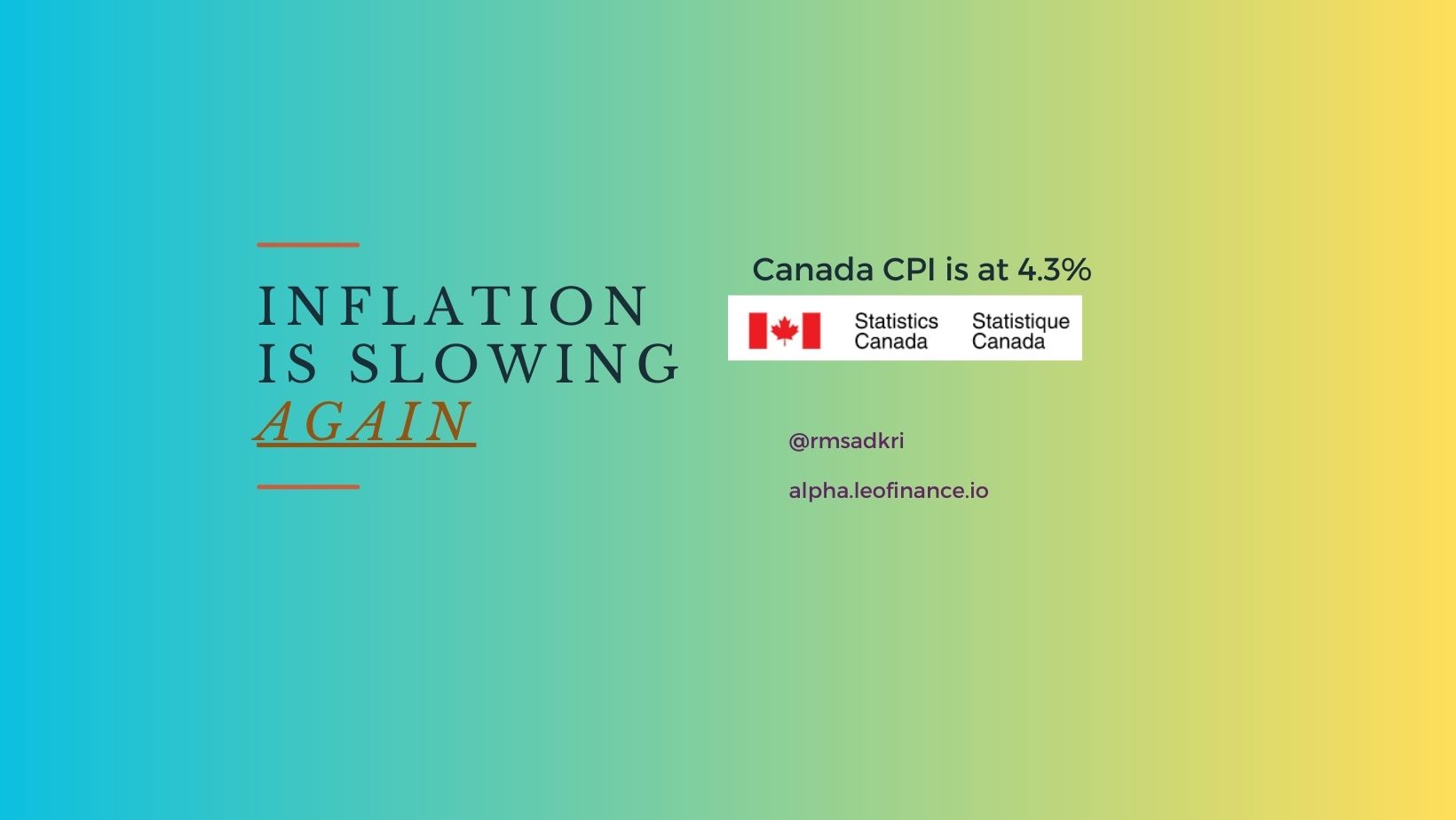
The Bank of Canada is projecting the inflation to come down to 3% by the Summer 2023. They are expecting the number to be within the range at 2% by the end of year 2024 as I noted in my previous post. Looks like the predictions from the bank of Canada are hitting the right mark.
Statistics Canada released the inflation number for March 2023 today. The number came out as predicted at 4.3%. It is on track to reach that 3% level in the next three months. The bank officials and the governor have been repeatedly saying that the tightening measure the bank took for the last 12 months will begin to take effect through out 2023.
Gasoline
The Quantitative Tightening is beginning to show the effect now. Having said that the decline was partly due to the decline in gasoline prices at -13.8% compared to -4.7% from March 2022. This was the largest decline in gasoline prices since July 2020. That is huge. The drop was almost at 12% if compared monthly from February to March 2023. I am curious to see how the gasoline price behaves next month as the pumps are clocking higher prices in now (in April).
Food
The food prices are not dropping as much though. The drop was insignificant at around 1% year over year. On a month-to-month basis the food prices are coming down significantly. Havin said that, the cost of food purchased increased 9.7% in March. This is weird info as the growth in price for fresh fruits and vegetables are beginning to slow but remains high.
Shelter
The shelter costs come down to 5.4% from 6.1% in February. On the other hand, the mortgaged costs were increased by three percent year over year in March. Canadians paid more in mortgage this year compared to last year. That is obvious when we factored in the rate hike the bank of Canada did since March last year. The overnight rate was hiked from 0.25% in March 2022 to 4.5% in January this year. There is no surprise that we paid more in Mortgage cost this year. Since I have a variable rate mortgage, I paid upward of 25% more in mortgage compared to last year.
The Bank of Canada is still hawkish amidst the inflation dropping to the lowest since 2021.
I am not sure what should I do with this data though. It is comforting to know that the inflation is coming down as expected and this would also mean the Bank will not be increasing the overnight policy rate in May 2023. However, the inflation is still high, and we are still feeling price pressure amidst high food prices and high consumer prices in general.
Consumers are still struggling with their disposable income as the majority of their income is going to high mortgage costs and high food prices. I am in a similar situation as last month with no new income source and the similar cost to services that I consume. Not enough money to pump into investment other than being active on Hive.
What does this mean for the Bank of Canada?
This means the bank officials must be patting the back in predicting the rates right. Canada was the first economy to pause the hike rate when others were still raising it. They managed to forecast it well out of necessity as Canadian economy is highly dependent on real estate compared to other developing nations. They had to tread the right balance to not collapse the housing market yet taming the high inflation.
It looks like the rates will come down as expected to 3% this summer. But the real job will be to bring the inflation down to 2%. The tightening measures have to go deep down into the economy to reflect the changes. We will be hoping to get things under control. Let’s see how the data on general economy and labour and employment comes out in the next few months.
The bank will not be changing their policy in the short term. They will be patient and hold on to their rate but will sound hawkish on their approach.
Posted Using LeoFinance Alpha




